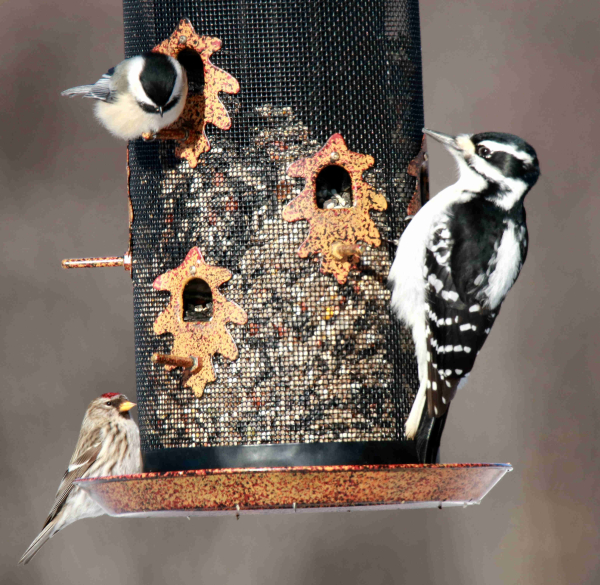Michigan: Target Sturgeon on the St. Clair River

For some, catching a lake sturgeon is the thrill of a lifetime. For many…that thrill will never be experienced. But what if it could be – simply by making a trip to the St. Clair River?According to Mike Thomas, a DNR fisheries research biologist at the Lake St. Clair Fisheries Research Station, the St. Clair River is one of the only waters within the Great Lakes (and their connecting waters) where you have a very good chance of targeting and catching a lake sturgeon.
“When someone calls and indicates they’re interested in getting involved in lake sturgeon fishing, the north channel of the St. Clair River is the first place I tell them to go.”
Lake sturgeon, one of Michigan’s most culturally and historically significant fish species can be found in several different waterbodies located throughout the state, but more often than not anglers aren’t able to catch them in those rivers and lakes because they are so scarce.
The lake sturgeon season on the St. Clair River is open from July 16 through November 30, with the possession season falling July 16 through September 30. Anglers can keep one sturgeon between 42 and 50 inches – all fish less than 42 inches and more than 50 inches must be released immediately. Please note – for the months of October and November anglers can only engage in catch-and-release fishing.
The experience when catching a lake sturgeon is unlike any other, considering the fact they are such large fish and have such a long life span.
“Most people who fish in Michigan will rarely, if ever, encounter a fish that weighs more than 30 pounds,” Thomas said. “But in the St. Clair River you can find many sturgeon over 50 pounds and a few over 100 pounds!”
Thomas himself caught a nearly 60-pound lake sturgeon on the river – which qualified him for a Master Angler award and caused envy amongst colleagues and friends alike.
“Because lake sturgeon are the longest lived fish in the Great Lakes,” he explained. “If you catch and release a lake sturgeon, it’s possible that you could catch the very same fish 10, 20 or 30 years in the future.”
It’s really not that complicated to get involved in the sport of sturgeon angling – simple, low-tech methods are all that’s necessary. Still fishing from an anchored boat is helpful while using a slip-sinker rig with a big glob of nightcrawlers on the hook. Leave the bait on the bottom and wait for the sturgeon to strike.
“I should warn you that there are many other species in the St. Clair River that like nightcrawlers too – especially channel catfish, smallmouth bass, walleye, rock bass, suckers and others,” said Thomas. “They’ll steal your bait – but sometimes that’s part of what makes the trip so fun.”
Most anglers target sturgeon after dark with a prime location being between Decker’s Landing and downtown Algonac. Thomas recommends rigging boats with LED lights to ensure safety while on the water and to always wear a personal flotation device. The river has a strong current and caution should be used.
Throughout other parts of the state the DNR and partners are working hard to rehabilitate the lake sturgeon populations found in key waterbodies. Overfishing, habitat loss and other factors caused significant declines, but strategic management over the years has helped to re-establish them in several areas.
“We’re really fortunate in the St. Clair River area that we’ve had a sturgeon population that’s been able to maintain itself,” Thomas said. “Since the late 1990s we’ve tried to get a better handle on the size and movement of the population – we think there’s around 50,000 juvenile and adult sturgeon in the system and they’re reproducing on their own.”
While that 50,000 estimate is just a small fraction of what the area’s historical abundance was, Thomas shared there’s the potential for more fish. Work has been underway for a number of years to implement habitat projects – such as spawning reefs lake sturgeon can use – that have been very encouraging.
For those who can’t wait to grab some gear to try and land a huge lake sturgeon, Thomas encourages them to include one critical item in their inventory: a really large landing net.
“It’s not easy to try and hand-land a sturgeon – especially if it’s a big one,” he said. “While pulling it into the boat you could easily end up out of the boat! Having a big landing net, larger than a salmon-type net, is very important for both you and the fish.”
For those that choose to harvest a lake sturgeon (during the allowable time period) you are required to report your catch. Please note more than 3,000 sturgeon in the system are tagged – if anglers catch one of those (whether they release it or not) they are encouraged to report their catch/fish information to the DNR.
For more information on all things sturgeon, including reporting requirements for harvested fish, visit Michigan.gov/sturgeon.





